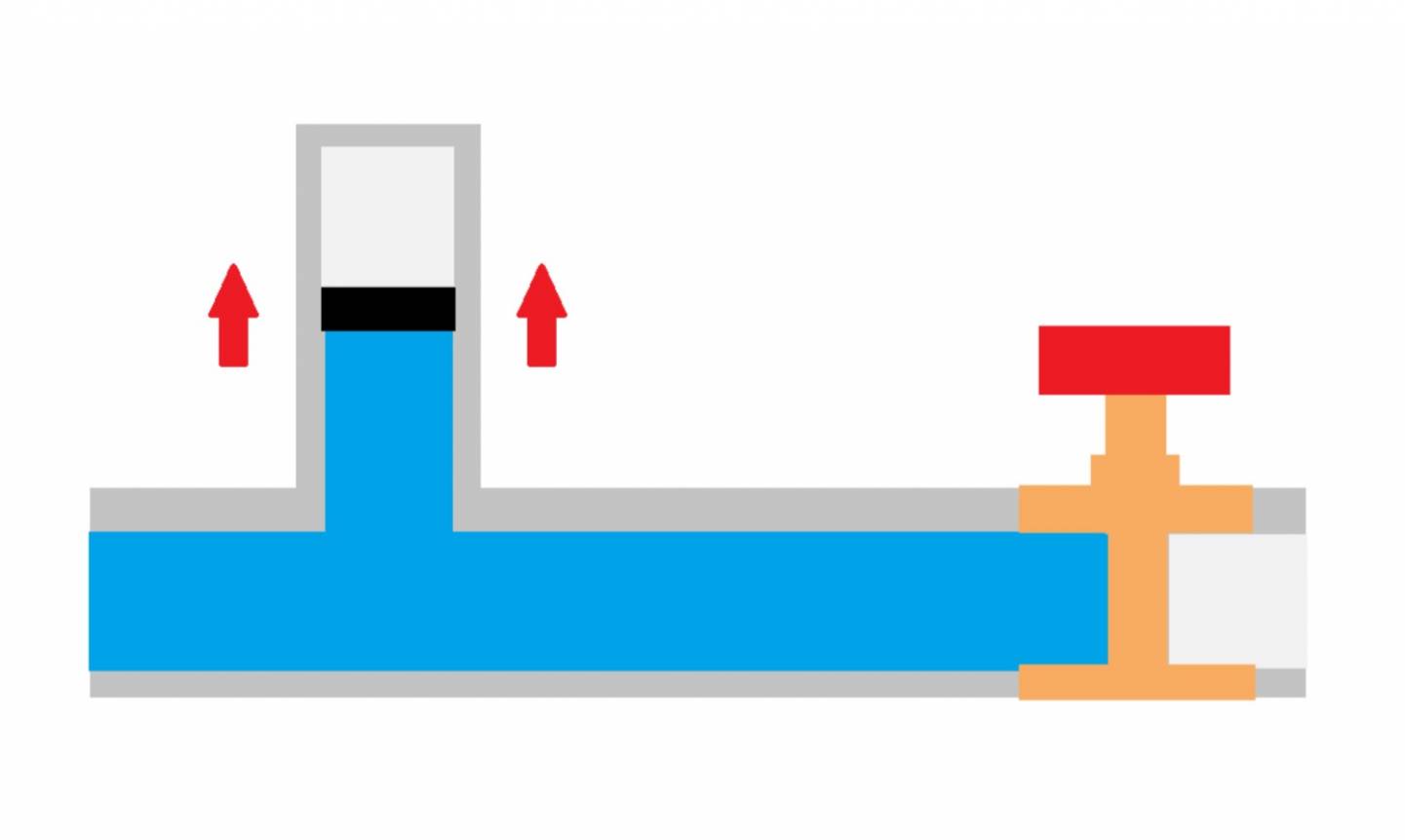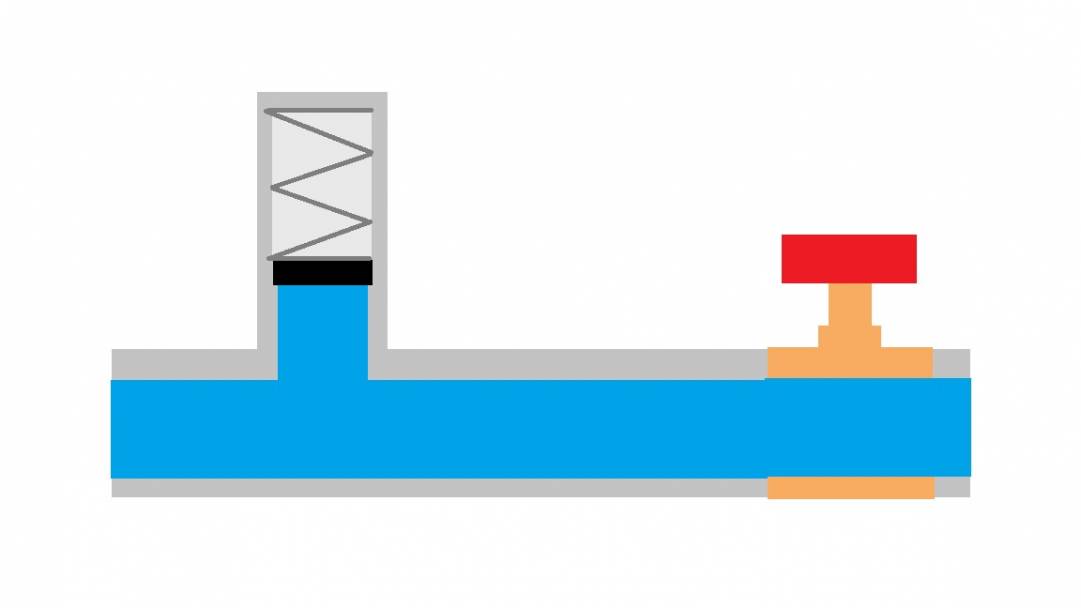
Water hammer is a little-known phenomenon that should not be underestimated. After all, it does not only concern the industries! Although the consequences are less serious, water hammer can even occur at home.
We have all known a friend who found himself completely soaked when starting a load of laundry. Or maybe you have had this unpleasant experience yourself! This mishap was most likely caused by water hammer.
Water hammer is a shock reaction that occurs when a liquid moving through a pipe is abruptly stopped by the closing and opening of a tap, valve or pump. The fluid loses its stored kinetic energy, creating a zone of overpressure, a shock wave and a loud noise characteristic of water hammer.
The shockwave generated by water hammer can cause major problems in piping systems and related components. Indeed, the shock wave propagates in the opposite direction to the initial fluid, which can lead to wear or even breakage of the piping or components. Such ruptures can lead to considerable water damage in the home, or equipment breakdown in a business. Unfortunately, the consequences do not stop at water damage. There are also the costs of replacing pipes and repairing other components. There are also significant costs associated with production downtime during repair work. Last but not least, water hammer can cause serious, life-threatening injuries to employees. Rapid pipe deformation can also injure people in the vicinity.
Here are some possible improvements to reduce the negative consequences of water hammer and avoid potential damage:
• Install a pressure or speed regulator,
• Use a pipe made of less rigid material (e.g. rubber hose) to reduce the propagation of the shock wave,
• Increase pipe diameter to reduce fluid velocity,
• Avoid closing valves too quickly by installing slow-closing faucets or by implementing a valve-closing procedure that ensures the valve will activate smoothly,
• Install a surge tank to absorb shocks,
• Install a shock absorber for the same reason.
Although each of these options brings its own advantages and disadvantages, legislators require water hammer protection in water distribution networks with prefabricated water hammer arresters.


Figure 2: Shock absorber reacting to water hammer
The shock absorber is a device that uses a piston to absorb the wave created by the water hammer. The piston separates the liquid present in the pipe from an air-filled chamber. A spring housed in the air chamber ensures pressure equilibrium through compression.
Finally, while the installation of such a device certainly helps to reduce the consequences of water hammer, it is very beneficial to get into the habit of slowly opening and closing a building's taps and valves.
https://www.rbq.gouv.qc.ca/domaines-dintervention/plomberie/interpretations-et-directives-techniques/coups-de-belier-et-amortisseurs.html
https://nrc-publications.canada.ca/eng/view/ft/?id=3ef82391-8a8a-4dfc-848f-bea6301bafb5 - Article 2.6.1.9
https://www.hydrosolution.com/entretien/protection-contre-les-coups-de-belier/
https://www.dft-valves.com/applications/water-hammer/#tab-3
https://live-resources-e2e-sales.ksb.com/resource/blob/443206/3abc0d3f208384272a0c178eb286b982/dow-3pump-control-and-system-automation-data.pdf
We use cookies to understand how you use our site and to improve your experience. This includes personalizing content and advertising. By continuing to use our site, you accept our use of cookies, terms and conditions, privacy policy. Confused? Send us an e-mail.
I acceptWe use cookies
Respecting your privacy matters to us. We use cookies to personalize our content and facilitate your digital experience. Some cookies may be collected with your consent.
Essential
Essential cookies help make a website usable by enabling basic functions such as page navigation and access to secure areas of the website. The website cannot function properly without these cookies.
Performance
These cookies enable us to analyze navigation on our sites and improve their operation.
Customization
Preference cookies enable a website to remember information that modifies the behavior or appearance of the site, such as your preferred language or the region you are in.
Targeted advertising
These cookies help us limit the number of times you see an advertisement, personalize our offers and services according to your centers of interest, measure the effectiveness of an advertising campaign, and so on. They may be shared with our partners.
We use cookies
Respecting your privacy matters to us. We use cookies to personalize our content and facilitate your digital experience. Some cookies may be collected with your consent.